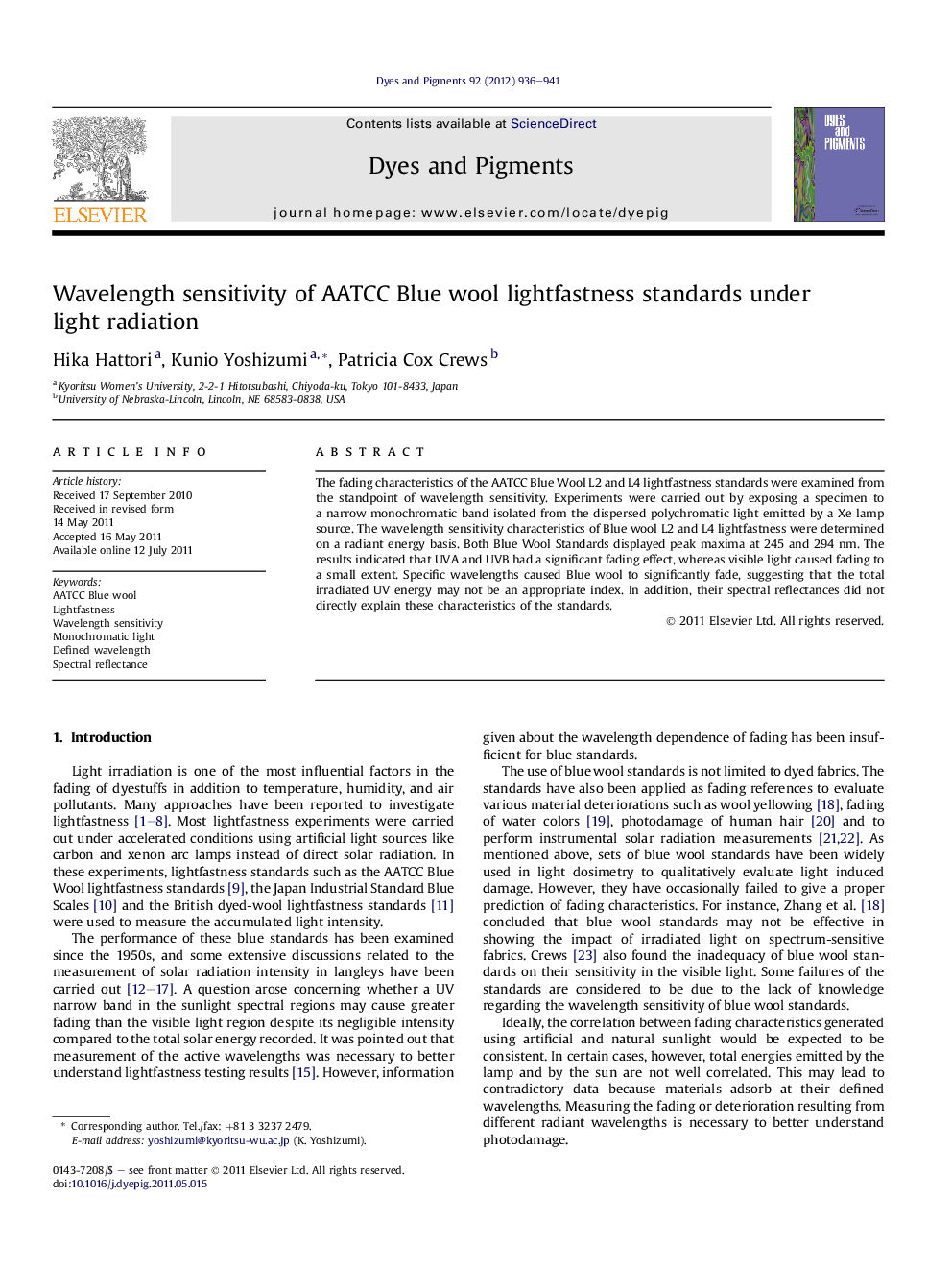| Article ID | Journal | Published Year | Pages | File Type |
|---|---|---|---|---|
| 177001 | Dyes and Pigments | 2012 | 6 Pages |
The fading characteristics of the AATCC Blue Wool L2 and L4 lightfastness standards were examined from the standpoint of wavelength sensitivity. Experiments were carried out by exposing a specimen to a narrow monochromatic band isolated from the dispersed polychromatic light emitted by a Xe lamp source. The wavelength sensitivity characteristics of Blue wool L2 and L4 lightfastness were determined on a radiant energy basis. Both Blue Wool Standards displayed peak maxima at 245 and 294 nm. The results indicated that UVA and UVB had a significant fading effect, whereas visible light caused fading to a small extent. Specific wavelengths caused Blue wool to significantly fade, suggesting that the total irradiated UV energy may not be an appropriate index. In addition, their spectral reflectances did not directly explain these characteristics of the standards.
► The fading characteristics of the AATCC Blue Wool L2 and L4 lightfastness standards have been examined from the standpoint of wavelength sensitivity. ► The wavelength sensitivity characteristics of Blue wool L2 and L4 lightfastness standards were determined on a radiant energy basis. ► Specific wavelengths caused the Blue wool lightfastness standards to significantly fade; suggesting that the total irradiated UV energy may not be an appropriate index.
